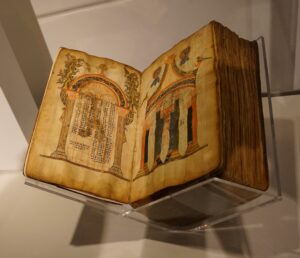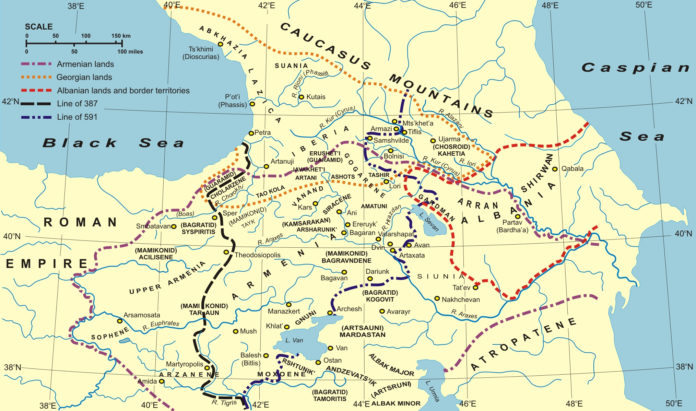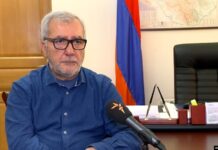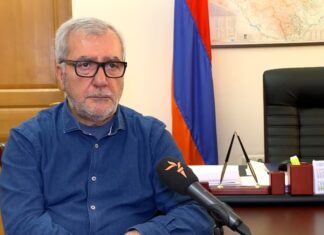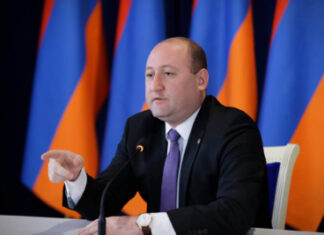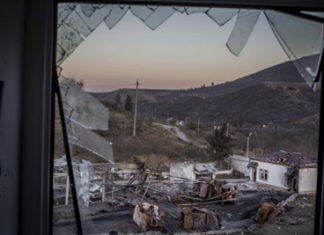By Henrik Bakhchinyan
Translated by Artsvi Bakhchinyan from the Armenian 2018 original published in Azg.
YEREVAN – In 1965, the ill-reputed Azeri historian Ziya Bunyadov’s book Azerbaijan in the 7th-9th Centuries was published in Russian in Baku. It is one of the classic examples of falsification of history.
Excessively “developing” the “theories” of the editor of his book, Caucasian Albania’s “specialist” Zelik Yampolski, Bunyadov came to the conclusion that the land of the Aghvans (Caucasian Albanians) – the Great Aghvank (Greater Caucasian Albania) had existed for centuries. It extended from the Caucasus Mountains to the Araks river and besides Aghvank proper, included Syunik, Utik, Artsakh and other regions. The Albanians living in that large country had their church and culture until the 8th century, but the “aggressor” Armenians conquered Aghvank through the Arab invaders, forcibly “Armenianized” the Albanians, forced them to convert to the Armenian religion, and appropriated its country and culture. In the 11th-13th centuries, the Albanians did not exist as a people, but its direct blood heirs are the Azerbaijanis, who converted to Islam for some reason. And since the Azerbaijanis are a Turkic people, the Albanians and other peoples of Albania are also of Turkish origin. And since the Albanians are the same Azerbaijanis, then Great Aghvank, with its aforementioned territories, is the same as Azerbaijan.
With such delirium, this representative of one of the Oghuz-Turkic nomadic tribes that penetrated the Caucasus only in the 11th century, “occupied” in a way typical of his tribe historical Aghvank and a number of provinces of Greater Armenia, declaring them Albanian-Azerbaijani. With the same delirium and looting mania, he considered the Armenian culture and literature created in those territories as Albanian-Azerbaijani. The first blow, of course, was given to the 10th century great historian of Aghvank, Movses Kaghankatvatsi, born in Utik. It was announced that his study The History of the Country of Albania was originally written in Albanian, and then the Armenians translated it into Old Armenian and destroyed the original. The poet Davtak Kertogh, who lived in the city of Partav of Utik province, the great chronicler Vanakan Vardapet, born in the province of Tavush, famous chroniclers and educational and cultural figures from the same state, Mkhitar Gosh, Kirakos Gandzaketsi, Davit Areveltsi, also the great Hovhannes Sarkavag Imastaser (born in the province of Parisos in Artsakh) and others were also considered to be of Albanian origin (i. e., Azerbaijanis), and their works were “Armenian language” monuments of Albanian-Azerbaijani literature.
However, Bunyadov was not satisfied with this (as they say, the appetite comes with eating). He considered Azerbaijan not only Great Aghvank, but also the historical Atrpatakan and almost all the territories of Soviet Armenia, where he did not see anything of “Armenian origin.”
